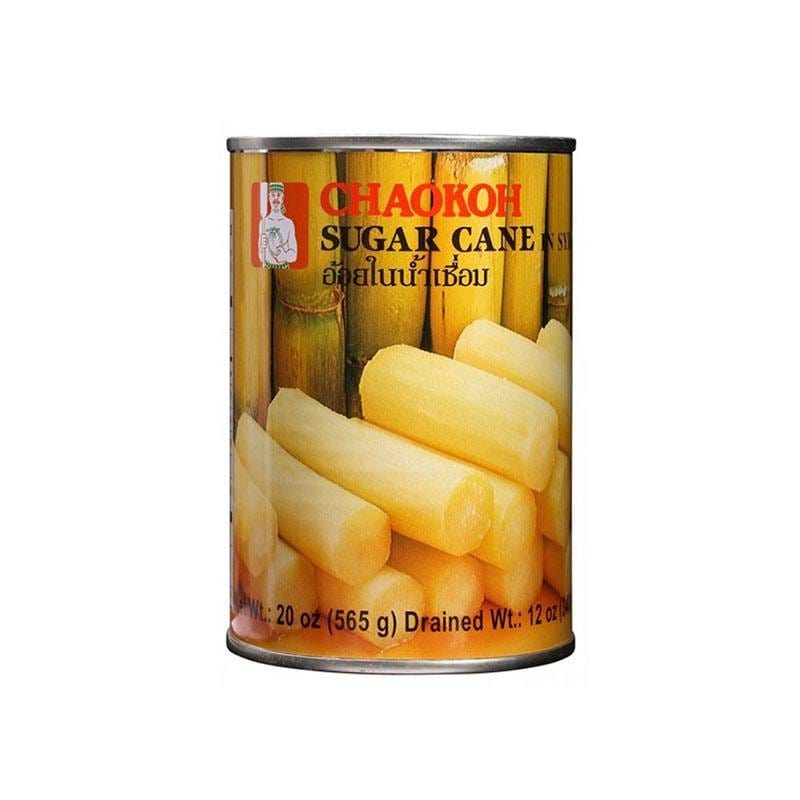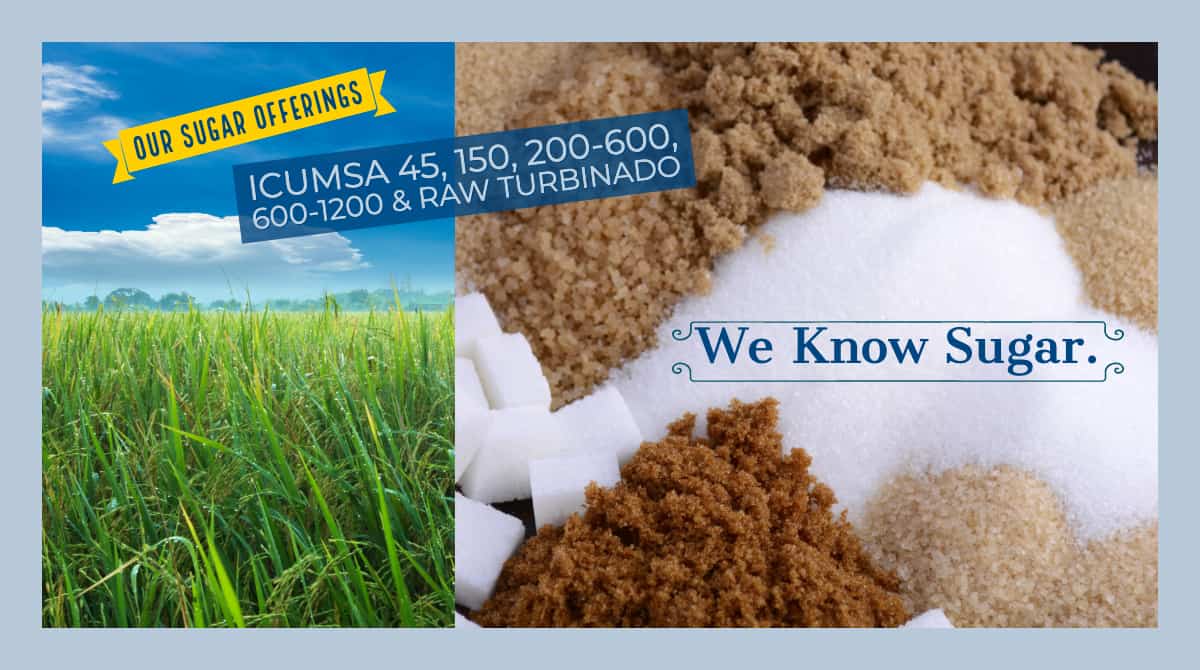Edible Goods Derived from sugar cane products That Enhance Culinary Experiences
Edible Goods Derived from sugar cane products That Enhance Culinary Experiences
Blog Article
The Comprehensive Trip of Sugar Cane: Understanding Products and Production Approaches
The journey of sugar walking stick is a complex procedure that begins in tropical areas with ideal expanding conditions. Growing techniques are created to take full advantage of yield and sustainability. Collecting methods range from standard manual strategies to modern-day mechanical techniques. After harvest, sugar walking cane goes through different processing stages to transform it right into granulated sugar. This expedition discloses not only the ins and outs of production however likewise the more comprehensive effects for worldwide markets and the atmosphere. What lies beyond this initial change?

The Background of Sugar Cane Farming
Sugar walking stick farming days back thousands of years, its origins can be traced to the exotic regions of Southeast Asia, where early farmers initially acknowledged the plant's pleasant sap. This exploration resulted in the cultivation of sugar walking cane as a staple crop, gradually spreading out to India and the Middle East. By the very first millennium AD, sugar walking cane was being cultivated in these regions, where techniques for extracting and fine-tuning sugar were developed.The plant acquired prominence in Europe throughout the Campaigns, as returning soldiers brought knowledge of sugar production back home. By the 15th century, the facility of sugar haciendas started in the Caribbean, driven by the need for sugar in Europe. The transatlantic slave labor fueled this development, as enslaved labor was utilized to take full advantage of production. Over centuries, sugar cane growing progressed, affecting economies and societies worldwide, making it a substantial farming commodity.
Growing Problems and Agricultural Practices
The effective farming of sugar walking cane counts greatly on details expanding conditions and agricultural techniques. Perfect temperatures vary in between 20 to 32 degrees Celsius, with well-distributed rains of 1,500 to 2,500 millimeters annually. Dirt quality is essential; fertile or sandy dirts, rich in raw material, promote healthy growth.Farmers often employ various agricultural practices to enhance return. Plant turning and intercropping are typical techniques to preserve soil fertility and control insects. Routine watering may be needed in drier regions, making certain that the plants obtain ample dampness. Fertilization, specifically with nitrogen and potassium, is critical for robust growth.Pest and weed monitoring methods, consisting of integrated parasite monitoring (IPM), assistance to reduce losses. Sustainable practices, such as marginal tillage and natural farming, are obtaining traction amongst producers to safeguard the environment. Jointly, these aspects add significantly to the successful production of sugar walking cane.
Gathering Techniques and Timing
In sugar cane production, the option in between manual and mechanical harvesting substantially impacts performance and yield. Timing is additionally essential, as harvesting at the suitable moment assurances optimal sugar content and decreases losses. Comprehending these variables is vital for effective sugar walking cane growing.
Guidebook vs. Mechanical Harvesting
Harvesting sugar walking stick entails two main approaches: guidebook and mechanical, each with distinctive benefits and obstacles. Hands-on harvesting, commonly carried out by workers using machetes, permits for better precision in reducing and lowers damage to the plant. It is typically preferred in regions with unequal surface or where the plant is interspersed with other plants, as workers can navigate these intricacies better. It is labor-intensive and time-consuming. Alternatively, mechanical harvesting uses specialized makers to reduce and gather the walking cane rapidly, boosting efficiency and reducing labor prices. This technique is fit for large procedures yet can bring about higher crop damage and soil compaction. Inevitably, the selection in between handbook and mechanical harvesting depends on different elements, including financial considerations and ecological conditions.
Optimal Harvesting Timing
Selecting the ideal minute to gather sugar walking cane substantially impacts both yield and quality. Suitable harvesting commonly takes place when the walking cane gets to complete maturation, usually in between 12 to 18 months after growing. At this phase, sucrose levels peak, ensuring the most effective sugar removal rates. Climate condition also play a vital duty; gathering throughout completely dry periods can stop damage to the cane and decrease soil compaction. Furthermore, monitoring the plant's shade and fallen leave decrease can indicate readiness, as a yellowing of the fallen leaves suggests that the cane is ripe. Prompt harvesting is vital, as delays can bring about reduced sugar content and raised vulnerability to pests and illness, ultimately impacting overall production efficiency.
Handling Approaches: From Cane to Sugar
The handling of sugar walking stick involves critical removal techniques that divide the juice from the coarse plant material. Complying with extraction, the refining process changes the raw juice into crystallized sugar, guaranteeing purity and top quality. Recognizing these approaches is essential for comprehending the trip of sugar from walking stick to final item.
Extraction Strategies Introduction
Extraction methods play a substantial role in changing sugar walking cane into functional sugar. Originally, the cane is gathered and moved to processing centers where it goes through detailed washing to get rid of impurities. The next step includes squashing the walking cane making use of hefty rollers, which releases the juice including sucrose. This juice is then made clear with the enhancement of lime and warm, allowing contaminations to settle out. After information, the juice is vaporized under regulated temperatures to concentrate the sugar material. Consequently, condensation takes place, where sugar crystals are developed as the focused juice cools down. These methods ensure the effective extraction of sugar while preserving the top quality required for additional processing. Comprehending these techniques is necessary for understanding the general production of sugar from sugar cane
Refining Process Explained
Refining sugar from the removed juice is a critical step that boosts its purity and top quality. This procedure involves several stages, starting with explanation. The juice is heated up and treated with lime and other agents to eliminate pollutants, resulting in a clearer liquid. Next off, the made clear juice undertakes dissipation, where water is eliminated to concentrate the sugar material. The concentrated syrup is after that taken shape by cooling, allowing sugar crystals to create. These crystals are separated from the remaining syrup, recognized as molasses, with centrifugation. The raw sugar is additional improved with washing, purification, and drying out, which removes any kind of remaining impurities. Completion item is the granulated sugar commonly utilized in households and sectors worldwide, making sure uniformity and sweet taste.
Lasting Practices in Sugar Cane Production
Sugar walking stick production has generally relied on intensive farming approaches, there is an expanding emphasis on sustainable techniques that promote environmental wellness and economic practicality. Farmers are increasingly taking on methods such as crop turning, which boosts soil fertility and lowers parasite invasions. Integrated parasite monitoring (IPM) is likewise gaining traction, permitting for natural Click Here predators to regulate pest populations, therefore reducing chemical pesticide use.In addition, innovations in watering methods, such as drip irrigation, are being used to preserve water sources. Sustainable land management methods, including minimized husbandry, aid stop soil erosion and preserve biodiversity. Furthermore, many producers are checking out natural farming approaches, which eschew synthetic fertilizers and pesticides entirely, fostering a much healthier ecological community.
The International Sugar Market and Economic Impact
Lasting practices in sugar walking stick production not only benefit the environment but also affect the dynamics of the international sugar market. As customer demand shifts in the direction of morally created items, countries taking on lasting techniques obtain affordable benefits. This pattern triggers major sugar exporters, such as Brazil and India, to incorporate eco-friendly techniques, therefore influencing global rates and supply chains.Moreover, variations in production as a result of climate change and environmental regulations can cause volatility in sugar rates, impacting economic climates reliant on sugar exports. For instance, areas that purchase lasting farming might experience improved return stability, resulting in better market positioning.Economic influences prolong past private countries, as worldwide trade agreements and tolls shape the affordable landscape. Ultimately, the interaction between sustainable methods and market dynamics emphasizes the value of adaptive approaches in a rapidly altering financial setting, influencing both manufacturers and consumers in the global sugar market.
Advancements in Sugar Cane Utilization and Results

As the need for renewable energies expands, innovations in sugar cane use and results are transforming the farming landscape. Scientists and business owners are exploring novel applications that prolong beyond standard sugar production. One substantial development is the conversion of bagasse, the fibrous residue left after juice removal, into bioenergy and check my site bioplastics (sugar cane products). This not just lowers waste but also offers lasting power choices for handling facilities.In enhancement, developments in fermentation technology have caused the production of biofuels, such as ethanol, from sugar walking cane, which adds to cleaner power remedies. The removal of molasses has opened up opportunities for producing value-added products like animal feed and specialized spirits.These innovations not just boost the financial feasibility of sugar walking stick cultivation but additionally advertise environmental sustainability, making sugar cane a pivotal crop in the shift towards a round economic situation. The continuous exploration of its possible remains to produce appealing results
Regularly Asked Concerns
What Are the Health Effects of Consuming Sugar Cane Products?
The health and wellness effects of consuming sugar walking cane products can differ. While they give energy and important nutrients, excessive usage may bring about weight gain, enhanced blood sugar degrees, and a greater risk of dental concerns. Moderation is vital.
Just How Does Environment Adjustment Effect Sugar Cane Production?
Environment adjustment substantially affects sugar walking stick production by modifying rainfall patterns and page boosting temperatures. These modifications can bring about decreased returns, increased pest stress, and challenges in preserving dirt wellness, ultimately impacting both top quality and quantity of harvests.
What Is the Duty of Sugar Cane in Biofuel Production?
The duty of sugar walking cane in biofuel production is significant; it acts as a renewable resource source, transforming sugars right into ethanol. This process minimizes dependence on nonrenewable fuel sources and aids mitigate greenhouse gas discharges, advertising ecological sustainability.

Are There Any Type Of Different Sugar Stemmed From Sugar Cane?
Different sugar originated from sugar walking stick consist of molasses and walking cane sugar itself. These items supply sweetening choices while maintaining some nutritional benefits, making them popular selections for customers looking for natural alternatives to sweetening agents.
How Does Sugar Cane Farming Affect Resident Communities?
Sugar walking cane farming considerably effects regional neighborhoods by supplying job opportunity, boosting neighborhood economic situations, and influencing social structures. It can additionally lead to ecological concerns and wellness problems, demanding a well balanced approach to lasting practices - sugar cane products.
Report this page